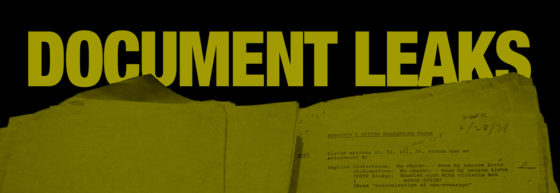“Our mission is to provide the highest quality scientific information and analysis to enable a healthy food system and a healthy world”
The Bioscience Resource Project provides scientific and intellectual resources for a healthy future. It publishes Independent Science News, a media service devoted to food and agriculture, and their impacts on health and the environment. It also offers resources for scientists and educators and internships and training for students. Through its innovative scientific journalism and original biosafety review articles, the project provides unique and revealing perspectives on issues that are fundamental to the survival of people and the planet. The project does not accept advertising or corporate funding and is a non-profit 501(c)3 organization. It is completely dependent on individual donations.We invite you to join the Project as a contributor or a donor.
Bioscience Resource Project News and Views
107 Nobel Laureate Attack on Greenpeace Traced Back to Biotech PR Operators
Published today (July 1st 2016) on Independent Science News: “107 Nobel Laureate Attack on Greenpeace Traced Back to Biotech PR Operators“, a short news item written by Jonathan Latham, PhD.
Synopsis: When 107 Nobel Laureates demanded that Greenpeace cease its opposition to GMOs and “golden rice,” no one in the press seems to have asked read more…
Financial Conflicts at National Academy Advisory Panel on the Future of GMO Regulation
Synopsis: A letter from academics, non-profits and farmer groups (signed by the Bioscience Resource Project) indicts the lack of balance, perspective and independence among experts chosen to carry out a new taxpayer-funded National Academy study. The study will advise the federal government on how to overhaul regulations concerning GMOs—including novel biotechnology products read more…
Organic Farmers Are Not Anti-Science but Genetic Engineers Often Are
Published today by Independent Science News: “Organic Farmers Are Not Anti-Science but Genetic Engineers Often Are” by Elizabeth Henderson.
Synopsis: Opponents of GMOs, including organic farmers, are routinely being called anti-science. But it isn’t organic farmers who prevent independent university researchers from accessing their seeds. Nor do organic farmers ignore scientific evidence of rising pesticide use and human harm. Organic farmers do work with universities to improve their methods, however; and they want more money for organic research. So, asks Elizabeth Henderson, who are the real anti-scientists?
Elizabeth Henderson farms near Rochester, NY: Peacework Community Supported Agriculture.
Read the entire article at: https://www.independentsciencenews.org/un-sustainable-farming/organic-farmers-are-not-anti-science-but-genetic-engineers-often-are/
Unsafe at any Dose? Diagnosing Chemical Safety Failures, from DDT to BPA
Published today (Tuesday May 17th, 2016) on Independent Science News, “Unsafe at any Dose? Diagnosing Chemical Safety Failures, from DDT to BPA” was written by Jonathan Latham, PhD.
Synopsis: Why do concentrations of harmful chemical pollutants continue to rise, in the environment and in our bodies, despite decades of campaigning against them? The chosen strategy of most environmental and public health advocates has been to focus on the elimination (banning) of specific toxic chemicals. Such campaigns are sometimes successful on their own terms, but the result is read more…
God’s Red Pencil? CRISPR and The Three Myths of Precise Genome Editing
Published today in Independent Science News, “God’s Red Pencil? CRISPR and The Three Myths of Precise Genome Editing” was written by Jonathan Latham, PhD.
 Synopsis: According to the media, “genome editing” techniques can precisely alter the DNA of living organisms. Furthermore, these new genetic engineering techniques are so “red-hot” and “game-changing” they will transform the landscapes of medicine and agriculture. Their safety and effectiveness hinges crucially on the claim of precision, yet how plausible is it? This article delineates three ways in which these technologies currently lack precision. 1) Presen read more…
Synopsis: According to the media, “genome editing” techniques can precisely alter the DNA of living organisms. Furthermore, these new genetic engineering techniques are so “red-hot” and “game-changing” they will transform the landscapes of medicine and agriculture. Their safety and effectiveness hinges crucially on the claim of precision, yet how plausible is it? This article delineates three ways in which these technologies currently lack precision. 1) Presen read more…
Jonathan Latham speaks in Endicott: GMO Hazards to Health and Ecosystems
Jonathan Latham, Bioscience Resource Project Executive Director, will give a talk in Endicott on Tuesday April 19 at the Susquehanna Sierra Club.
The title of the talk is: GMO Hazards to Health and Ecosystems.
Location: Central United Methodist Church in Endicott, 17 Nanticoke Ave (close to the Cider Mill).
The meeting time is 7:30 and the event is free and open to the public.

